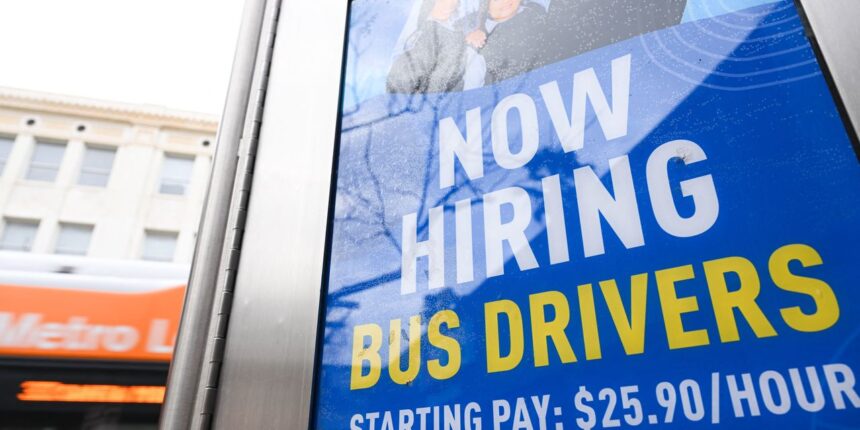The post-pandemic boom in hiring appears to be over, and businesses are adding fewer workers. Is the slowdown in employment going to continue?
Here’s what to watch in the U.S. jobs report due Friday morning.
The forecast
The United States is expected to add 170,000 jobs in September, keeping the increase below 200,000 for the fourth month in a row. The last time that happened was in 2018.
Even those small increases, however, have been enough to soak up all the new people entering the labor market each month. Federal Reserve officials believe the economy needs no more than 75,000 to 100,000 jobs a month.
Anything more than that could exacerbate the worst labor shortage since World War II, drive wages up and make it harder for the Fed to get inflation under control.
A separate report by ADP suggested the private sector added just 89,000 jobs in September. The report has a poor track record of foreshadowing the increase in the government’s official jobs estimate, however.
Unemployment rate
The percentage of jobless Americans seeking work is forecast to fall a tick from 3.8% to 3.7%.
The jobless rate jumped three-tenths of a point in August, but it was most likely the result of younger people staying at their jobs a bit longer before returning to school.
There’s no reason to think layoffs have risen much, if at all. The number of people applying for jobless benefits, for instance, has fallen back to pandemic-era lows and is hovering around 200,000.
It typically rises above 300,000 when the economy sours.
Wage growth
Average hourly wages are forecast to rise 0.3% in September, a touch faster than in the prior month. The Fed would prefer slightly smaller increases each month.
The rise in pay over the past year is likely to stay at 4.3%. That’s also too high for the Fed.
Central-bank officials say annual wage growth has to slow to 2% to 3% to help the Fed in its fight against inflation. That’s how fast wages rose before the pandemic.
Labor-union strikes
The expanded strike by auto workers could depress employment growth or raise unemployment in September.
Yet the effects of United Auto Workers strife could be offset by the return of Hollywood writers after the Screen Actors Guild ended its strike last month.








